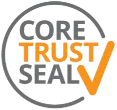DRI has launched another set of guidelines – this time a helpful guide to choosing the right Content Management System (CMS) Technology for your organisation.
This document is important because Content Management Systems provide the backbone of data management. Before you can ingest into a trusted digital repository (like DRI!), you need a place to record metadata and store digital objects. Widely available tools such Excel are often used as a default, but they can actually make for more work in the end, because, for example, Excel cannot export to XML, which is a common markup language used in the creation of Linked Data, or for encoding metadata when preparing to deposit in a repository. This is just one small example of why it is worth taking the time to research suitable Content Management Systems for you requirements.
DRI receives numerous queries about Content Management Systems from people with varying ranges of cataloguing and collection management experience. Given the unique requirements of different organisations, we cannot recommend specific software, but we do feel that we are providing a useful service by publishing this overview of the available options. The guidelines promote research-based decision-making: There is a breakdown of the advantages and disadvantages of open source versus proprietary software, as well as a set of practical steps to take when considering the kind of system that would best suit an organisation’s needs.
Please let us know what you think! Download Choosing Content Management Technologies and visit our Publications page for more reports and guidelines.



